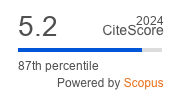Article | Open Access
A Tale of Two Metaverses: How America, China, and Europe Are Shaping the “New Internet”
| Views: | 980 | | | Downloads: | 827 |
Abstract: The Metaverse, a virtual shared space created by the convergence of physical and virtual reality, is still in its infancy. Yet, China and the EU have already formulated differing visions for the future of the “new internet,” and issued policies meant to advance that future. The US has neither articulated a specific vision nor adopted specific policies for the emergent Metaverse but has designated it as a critical technology and promoted its use in military contexts. Additionally, it has implemented a range of policy measures that support the technology industry in general and has therefore allowed its big tech companies to make large investments in the Metaverse. In this article, I argue that the divergent stances of the three powers have led to two imagined Metaverses and two actual Metaverses taking shape and competing. In terms of visions, China promotes an industrial Metaverse led by its biggest companies that strengthens the Chinese Communist Party, contributes to economic growth, and to China’s geopolitical leadership. In contrast, the EU envisions an open and interoperable Metaverse that respects digital rights and provides opportunities for European companies. Reality contrasts starkly with the European vision, as there is currently a closed, consumer-focused Western version of the Metaverse dominated by American big tech and a closed, industry-focused Chinese version dominated by Chinese big tech. However, since the Metaverse is still emergent and contested, there is room for policymakers to direct it towards a version that serves more than just commercial or geopolitical interests.
Keywords: competition; digital platforms; digital sovereignty; geopolitics; Metaverse; political economy
Supplementary Files:
Published:
© Nora von Ingersleben-Seip. This is an open access article distributed under the terms of the Creative Commons Attribution 4.0 license (http://creativecommons.org/licenses/by/4.0), which permits any use, distribution, and reproduction of the work without further permission provided the original author(s) and source are credited.


